In July my wife Anne, my four children and I followed in the footsteps of David Livingstone. It was a journey of four and a half thousand kilometres across Southern Africa in a white minibus. While Livingstone explored sights and civilisations unknown to the western world one hundred and fifty years ago, I was rediscovering my fading childhood memories of Zambia and hoping they would be as wonderous to my children as they were to me forty years before.
Our journey through South Africa, Zimbabwe, Zambia and Botswana began at Johannesburg airport where we collected our comfortable eight seat minibus. A 4×4 would have been more appropriate for the bone jarring, potholed roads and the axle deep sand that we sometimes endured, but overall our minibus was a spirited workhorse and perfect for our large family.
Our first stop down memory lane was the awe-inspiring Great Zimbabwe ruins. Built in the fourteenth century by a long forgotten African kingdom, it bears comparison with Ancient Egyptian monuments. The famous author Wilbur Smith in his book Sunbird speculated that it was the last outpost of a doomed Phoenician civilisation. The massive walls and impressive battlements were constructed over several centuries and the stonework is near perfect. I had first visited Great Zimbabwe as an eight-year-old at a time when the country was called Rhodesia. Those memories were still fresh, assisted by the magnificence of the stone structures that have lent their name to the new country of Zimbabwe. The area still retains much of its British colonial splendour and we stayed overnight in the faded glory of a grand home that had been converted to a comfortable B&B.

The Great Zimbabwe ruins
Two days later we arrived at Kariba Dam on the Zambezi River. Built in the 1960s was once the largest man-made lake in the world. The dam still provides most of the electricity to both Zimbabwe and Zambia. Lake Kariba is surrounded by national parks and is home to exotic wildlife and big game fish including Tiger Fish and Bream. It is an undiscovered paradise and home to a fleet of houseboats beloved by Zimbabweans who while away their political and economic woes on the decks of these comfortable but ungainly craft. We spent three days on one such boat enjoying the life of luxury. The banks of the lake teemed with elephants, hippos and crocodiles and the air was filled with the music of fish eagles.
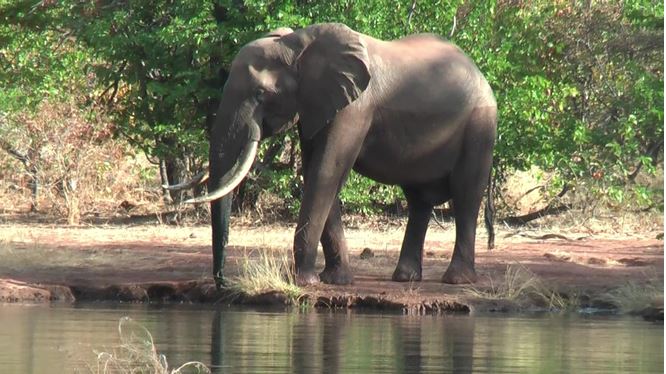
A magnificent ‘tusker’ on the banks of Lake Kariba
Too soon our Kariba houseboat experience came to end. We left Zimbabwe behind and drove over the massive dam walls into my childhood home country of Zambia. It was at this point that our tour almost unravelled. The Zambian customs official noticed that our vehicle’s cross border paperwork had not been correctly certified and insisted that we produce the correct paperwork. Three anxious hours later, we were still languishing at the border crossing. But Dr David Livingstone never let a little bureaucracy stand in his way, and neither did the Hepworth family! With a little charm and persuasion, we were eventually waved through on the understanding that the missing paperwork would be emailed through from Johannesburg later that day.
We were back in my childhood home of Zambia and heading to Lusaka. I was hoping to instil my own children with the same sense of wonder that I had felt for this exotic location many years before. After travelling six days and eighteen hundred kilometres in our white mini-van through South Africa and Zimbabwe, the moment had arrived.
Lusaka has been the capital of Zambia since 1935. When my family moved there shortly after independence in 1971 it was a charming and cosmopolitan pocket-sized city. Its pleasantly warm climate, fertile soil, abundance of water and friendly people made it something of a Garden of Eden for our family. For the next thirty years little changed in Lusaka. Its economy depended entirely upon the price of copper (Zambia’s main export). Basic commodities were frequently in short supply and power cuts were a fact of life. Lusaka became a time capsule and felt like a comfortable pair of old slippers. My parents loved Lusaka enough to spend the rest of their lives there and are buried in a tiny village in the African bush twenty kilometres north of the city.
As we drove into Lusaka, we entered a completely different world. Sure, the potholed roads were a potent reminder of times gone by, but the city had become enormous in the short span of 15 years. It is now the fastest growing city in Southern Africa and has doubled in physical size. International hotels have sprung up like mushrooms and dozens of new shopping malls have flourished, stocked with every commodity known to man. Brand new suburbs have transformed this once sleepy little town. Much of the city centre was familiar, but traffic had become a nightmare. Speed humps blighted the roads and the main roundabouts were at a standstill. Lusaka had traded its comfy old moccasins for the latest designer footwear.
For all that was new, Lusaka still delivered its charm in abundance. We stayed at a stunning lodge on the fringes of the city as the guests of one of my childhood friends. It was an emotional reunion and I will be forever grateful for the kindness and gracious hospitality that she and her family showed us during our brief stay. We also visited a nearby elephant orphanage at Lilayi Lodge where orphaned baby elephants are hand reared till they are old enough to be released back into the wild. And my wife Anne and daughter Sarah took a horseback safari ride in the grounds of Lilayi.
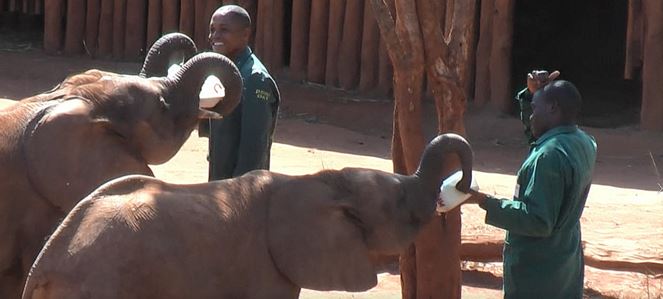
Lilayi elephant orphanage, Lusaka
The most emotional part of our African journey was the pilgrimage to the graves of my mother and father who died of cancer over fifteen years ago. The grave site was in a tiny Zambian village just outside our old family farm. But first, we called in to visit the farm which had been my childhood home and where my memories of Lusaka are most lucid. The new owners of the farm took us under their wing and gave us a grand tour of the 750-hectare property. Like everything else in Lusaka, it had been extensively modernised and extended. Fortunately, the house itself was exactly as it had been all those years ago. The ghosts of the past swirled through my mind and filled me with strange but comforting emotions. Two hours later we finally visited the tiny village where my parents were buried.
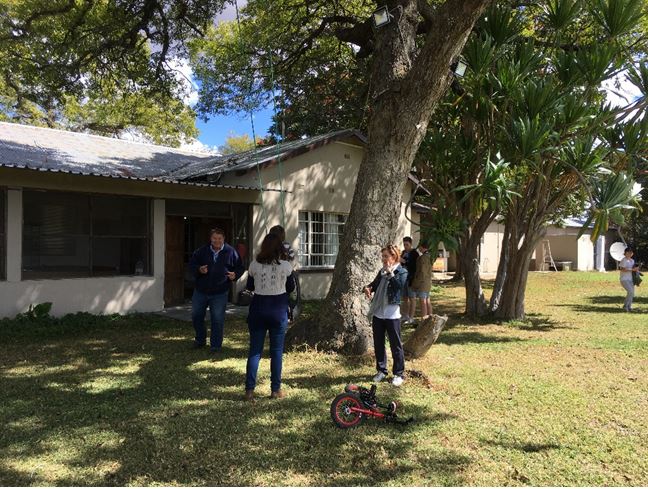
My childhood home in Lusaka
The eleven-kilometre dirt road to my parent’s farm was always in a shocking, rutted and potholed condition and it seemed as if it had deteriorated further in the preceding fifteen years. Our poor mini-van almost shook itself to bits and refused to start when it was time to set off back to Lusaka. Luckily, we bump started it with the help of the enthusiastic locals and much to our relief, we never had a mechanical problem again for the rest of our trip.
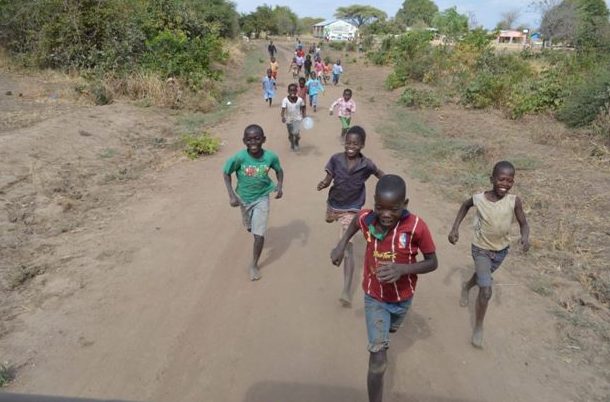
Zambian children racing our white minibus
Lusaka left me with a string of mixed emotions. The past is indeed a foreign country as L.P. Hartley wrote in his excellent book ‘The Go-Between’. We can never expect things to remain unchanged like a fading black and white photograph and much has improved for the wonderful people of Zambia. Luckily, I had one more important reason to be visiting Zambia and that was to reacquaint myself with the wildlife of the Luangwa Valley and to check on the conservation efforts that protect the its magnificent elephants.
Our flight to Luangwa was an unexpected adventure in a twelve seat Cessna. We tree hopped the five hundred kilometres to Luangwa’s tiny airport giving us a panoramic view of the Zambian bush. The summer rains had been late but fierce, leaving the countryside lush and green despite the onset of the dry season.
I have often mentioned that the Luangwa Valley is my favourite spot on earth and a world-renowned wildlife haven. Concentrations of game along the gently meandering Luangwa River and its lagoons are among the most intense in Africa. It is famous for its walking safaris, the large number of leopards and the breathtakingly beautiful Thornicroft Giraffe which exists nowhere else in the world. And yet despite this incredible natural trove of natural riches it also remains unspoilt by the impact of tourism.
I had heard that the elephant population in Zambia had been massively impacted by poachers supplying the insatiable Chinese market for ivory. I wanted to see the effect of poaching on the ground for myself and talk to experts who were in the front-line against the ivory trade. I also wanted my children to experience the feeling of awe one gets from being in the presence of these majestic beasts in their natural habitat. But I need not have worried. South Luangwa is the jewel in the Zambian wildlife crown and a source of national pride. While other parks in the more remote regions of Zambia have indeed suffered catastrophic losses of elephants, Luangwa’s population has stabilised around 20,000. It is still a considerable drop since my first visit there in 1971 but elephant numbers are sustainable and in perfect balance with the natural environment. Indeed, all the birds and animals of Luangwa looked plump and in the peak of condition during our visit. The late rains had been plentiful, and Luangwa was thriving.
We settled into our beautiful chalets at ‘Thornicroft Lodge’ in Mfuwe, a short drive from the tiny airport. We were greeted by the resident troop of vervet monkeys, baboons and dainty impalas. More threatening were the hordes of crocodiles and noisy hippos that lined the banks of the Luangwa. For the next three days we were in wildlife heaven. On our morning and evening safaris we spotted every major animal that Luangwa has to offer except the rhino. (The Black Rhino was declared extinct in Zambia in 1998 thanks to rampant poaching. However, a small population has been re-introduced into a secret and heavily protected location in North Luangwa.*) There was an abundance of elephants and their calves and I was able to rediscover the magical connection one gets when viewing these magnificent creatures in the wild.

Luangwa’s big cats
The huge numbers and sheer variety of wildlife was a delight to the senses and Luangwa certainly enchanted my children in the same way it had captivated me many years before.
Too soon we were back in Lusaka and making our way to Livingstone and the Victoria Falls. Once again, the road deteriorated to the point that I feared for the mechanical integrity of our trusty white minibus, but we safely navigated what must be the worst 50km stretch of ‘A1’ anywhere in the world.
David Livingstone wrote of the Falls “…but scenes so lovely must have been gazed upon by angels in their flight.” It is a massive curtain of water 1,700 metres wide and 110 meters deep. The locals describe it as the ‘smoke that thunders’ and it is classified as the largest waterfall in the world. It is possible to feel the raw power of the Victoria Falls as you gaze upon the mightiest of the seven wonders of the world.

The Victoria Falls Bridge from the air
Our first sighting of the Falls was during the third border crossing of our trip from Zambia back into Zimbabwe. It is without doubt the most spectacular border crossing in the world. One must drive (or walk) across a single span arched bridge built in 1904 at the request of Cecil Rhodes. It spans the second gorge 130 metres above the raging, frothing body of water known as the ‘boiling pot’ and the glimpse of the Main Falls as you drive past takes your breath away.
We stayed at the beautiful Lokathula lodge on the Zimbabwe side of the Falls and immersed ourselves into the multitude of activities that is all part of the Victoria Falls experience. We tried our hand at white water rafting and witnessed our ‘sister’ raft flip over at the rapid affectionately known as ‘Oblivion’ spilling its unfortunate passengers into the hippo infested Zambezi River. We took a fifteen-minute helicopter ride over the Falls and my son Patrick bungee jumped over the Victoria Falls Bridge.
In Zimbabwe, we acquired the ‘must have’ billion dollar note souvenirs that are a legacy of the hyperinflation that was rampant in the country until 2008. These notes have now been replaced by the more stable US dollar but due to economic restrictions, US dollars are almost unobtainable anywhere in the country. Tourists must bring in their own dollars or risk running out of cash before their holiday gets into full swing. Luckily electronic funds transfer known as ‘swipe’ is accepted in shops and petrol stations everywhere. I purchased two hundred billion ‘Zim dollars’ in exchange for five US dollars as a fond reminder of our time in the beautiful country of Zimbabwe.
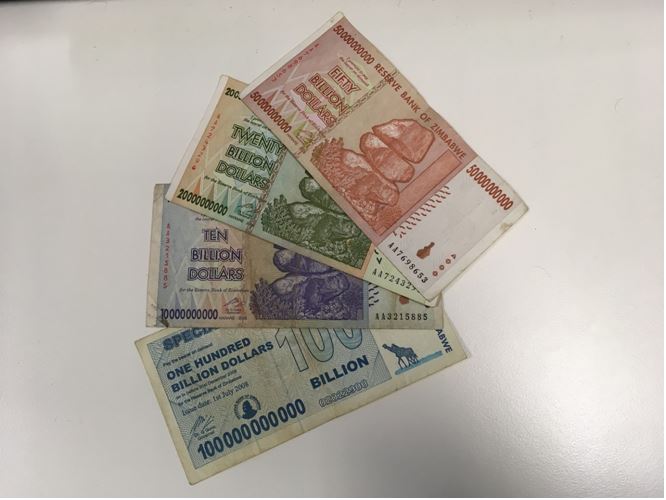
Becoming a billionaire in Zimbabwe is easy!
All too soon, our journey approached its end. The quirky border post into Botswana sits on the confluence of four different countries (Zimbabwe, Zambia, Botswana and Namibia) which baffles the senses but is a legacy of the colonial map makers of the nineteenth century.
Botswana is a beautiful country and an example to the rest of Africa on how to conserve its elephants. There are over 100,000 elephants in Botswana (one quarter of the world’s elephant population). We stayed in a delightful resort called ‘Elephant Sands’ where tourists can have an ‘up close and personal experience’ with a whole herd of elephants! I would love to have stayed longer in Botswana, but that will be for another time. We whistled through Botswana in two days, using their superb roads and friendly border crossings.
Returning to reality in Sydney has been a tough experience for the family. We had made so many new friends and reacquainted ourselves with old ones. I have regained my love for Africa, its people and the abundant gifts of nature it possesses. My family has some understanding of my earlier life in Africa and have had the opportunity to experience the mighty elephant in the wild. But most of all I have returned invigorated and ready to write my fourth book where the heroes will be the elephants and those who protect them.
* https://www.newsweek.com/2015/03/27/africas-conservation-miracle-return-rhinos-316121.html
Leave a Reply Cancel reply
This site uses Akismet to reduce spam. Learn how your comment data is processed.

